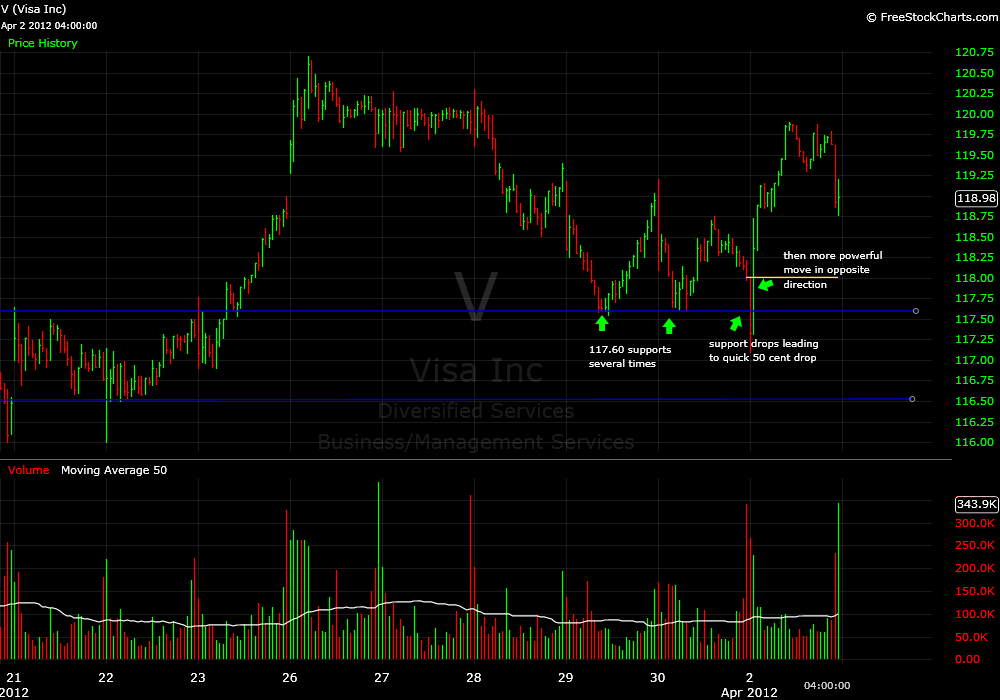A large part of successful trading is understanding how others are positioned in a stock and using that information to your advantage. One of the most common triggers for opening a short position in day trading is a drop of multi-day support. The idea being that many longs will have stop orders below this level, which will lead to a large decline in the stock price as selling ensues. But what happens when a large number of traders get short on the drop of a support level but there are no real sellers to push the stock lower? What if longs use this as an opportunity to buy more stock? There is usually a powerful reversal and if you aren’t prepared you may end up being the deer in the headlights unable to move.
This morning V dropped multi-day support on the Open and then quickly reversed. One of our traders got smoked on a V short position. Here are a few tips to help avoid taking large losses in a Bear Trap.
- If shorting into weakness right on the Open cover your position immediately if the stock ticks above the support level
- Only put on 25% of your position until you clearly identify selling on the Offer at or below the support level
- Study the stock you are attempting to short to get an understanding of whether it has a history of Bear Traps. i.e. look at the AMZN chart for the past two years and identify what appear to be higher time frame shorts on break of prior support. How many times did those trades actually work?
Steven Spencer is the co-founder of SMB Capital and SMB University and has traded professionally for 16 years. His email is [email protected].
No relevant positions



One Comment on “Trading Lesson: The Bear Trap–Ouch!”
Steve,
Historically, I’ve been caught by this trap on more than a few occasions. Going through my trade journal the overwhelming emotion in these trades is fear of missing out (FOMO). Trying to get in early. The concept of *inflection* levels/lines is crucial to my own playbook/tradeplan. I now have rules that will not allow me to short above these clear inflection lines nor go long just below them either. I let these levels break and retrace or clearly hold to enter positions.Where I tend to get into trouble now is trading in areas where the inflections are not clear or ambiguous. I’ve found the *clearer* the inflection the higher the odds.Best,-B